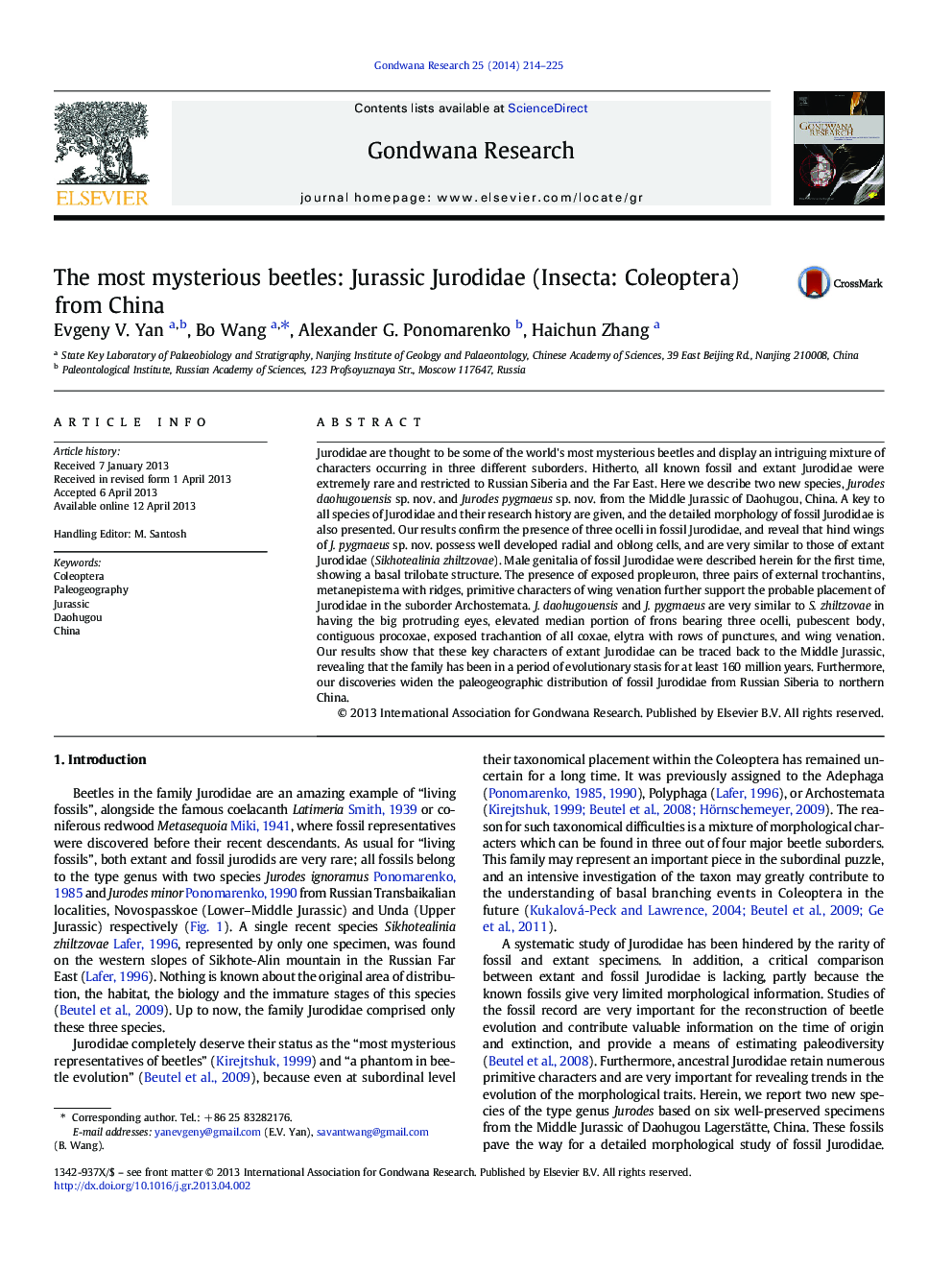| کد مقاله | کد نشریه | سال انتشار | مقاله انگلیسی | نسخه تمام متن |
|---|---|---|---|---|
| 4727124 | 1356362 | 2014 | 12 صفحه PDF | دانلود رایگان |

• Two new species of Jurodidae are described from the Middle Jurassic of China.
• The detailed morphology of fossil Jurodidae is presented.
• Our results reveal at least 160 million years of evolutionary stasis in Jurodidae.
Jurodidae are thought to be some of the world's most mysterious beetles and display an intriguing mixture of characters occurring in three different suborders. Hitherto, all known fossil and extant Jurodidae were extremely rare and restricted to Russian Siberia and the Far East. Here we describe two new species, Jurodes daohugouensis sp. nov. and Jurodes pygmaeus sp. nov. from the Middle Jurassic of Daohugou, China. A key to all species of Jurodidae and their research history are given, and the detailed morphology of fossil Jurodidae is also presented. Our results confirm the presence of three ocelli in fossil Jurodidae, and reveal that hind wings of J. pygmaeus sp. nov. possess well developed radial and oblong cells, and are very similar to those of extant Jurodidae (Sikhotealinia zhiltzovae). Male genitalia of fossil Jurodidae were described herein for the first time, showing a basal trilobate structure. The presence of exposed propleuron, three pairs of external trochantins, metanepisterna with ridges, primitive characters of wing venation further support the probable placement of Jurodidae in the suborder Archostemata. J. daohugouensis and J. pygmaeus are very similar to S. zhiltzovae in having the big protruding eyes, elevated median portion of frons bearing three ocelli, pubescent body, contiguous procoxae, exposed trachantion of all coxae, elytra with rows of punctures, and wing venation. Our results show that these key characters of extant Jurodidae can be traced back to the Middle Jurassic, revealing that the family has been in a period of evolutionary stasis for at least 160 million years. Furthermore, our discoveries widen the paleogeographic distribution of fossil Jurodidae from Russian Siberia to northern China.
Figure optionsDownload as PowerPoint slide
Journal: Gondwana Research - Volume 25, Issue 1, January 2014, Pages 214–225